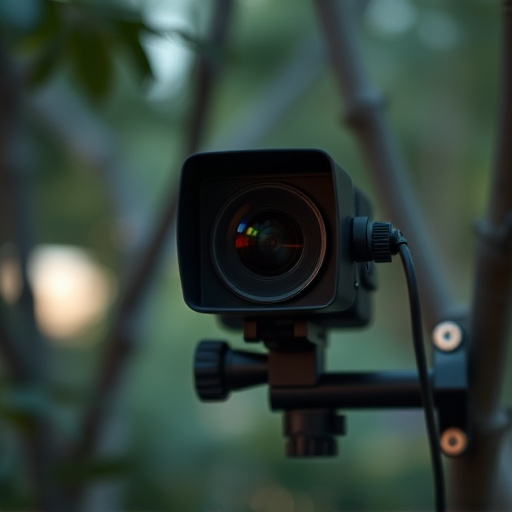Hidden Nanny Cams with night vision pose a unique challenge for surveillance detection due to their covert nature. Electromagnetic signal detectors, frequency scanners, and thermal imaging technologies are key tools to uncover these devices in low-light conditions. Legal considerations, including consent and data protection, must be strictly adhered to when employing such surveillance methods. Proactive measures, like regular EMF scans, shielding, and education, can help prevent their installation and protect individual privacy.
Uncover the secrets behind detecting hidden surveillance devices with our comprehensive guide. In today’s digital age, privacy concerns are at an all-time high, especially with the rise of hidden nanny cams and their electromagnetic signals. This article explores the basics of electromagnetic signals, the role of night vision technology, and innovative tools for detection. We also delve into legal considerations and offer essential tips for effective surveillance and prevention measures against these often elusive devices.
- Understanding Electromagnetic Signals: The Basics
- Night Vision Technology and Its Role in Detection
- Detecting Hidden Devices: Tools and Techniques
- Legal Considerations and Privacy Concerns
- Tips for Effective Surveillance and Prevention Measures
Understanding Electromagnetic Signals: The Basics
Electromagnetic signals are an essential aspect of modern technology, often invisible to the naked eye but all around us. When it comes to hidden nanny cams equipped with night vision capabilities, understanding these signals is crucial for effective surveillance device detection. These signals, generated by various electronic devices, travel through the air and can be picked up by sensitive receivers.
The basics involve recognizing that different types of electromagnetic waves have distinct characteristics. Radio frequency (RF) waves, for instance, are commonly used in wireless communication and can carry data over long distances. By tuning into these specific RF signals, one can potentially locate hidden cameras, especially those designed with covert operation in mind. Night vision capabilities further enhance this process, allowing for the detection of faint signals in low-light conditions, making it an invaluable tool for discreet surveillance.
Night Vision Technology and Its Role in Detection
In the realm of hidden nanny cams and surveillance device detection, night vision technology plays a pivotal role. These advanced systems are designed to operate effectively in low-light conditions, making them ideal for covert operations that require continuous monitoring without raising suspicion. Night vision capabilities allow devices to capture clear images and electromagnetic signals even after the sun sets, ensuring round-the-clock observation.
Whether it’s a hidden nanny cam concealed in a book or a sophisticated surveillance device embedded in everyday objects, night vision technology amplifies the signal detection process. By employing infrared imaging and enhanced light amplification, these devices can penetrate darkness, providing crucial visual evidence and electromagnetic signal data that might otherwise remain hidden. This capability makes them invaluable for both personal security and professional investigations alike.
Detecting Hidden Devices: Tools and Techniques
Detecting hidden devices, such as nanny cams with night vision, requires a blend of specialized tools and techniques. One of the primary methods involves using electromagnetic signal detectors. These devices can pick up on tiny fluctuations in electromagnetic fields, which many surveillance devices emit. By employing frequency scanners capable of detecting infrared or radio signals, experts can uncover hidden cameras, especially those equipped with wireless features.
Additionally, visual inspections with thermal imaging technology are invaluable. Night vision goggles and thermal cameras can reveal heat signatures different from the surrounding environment, indicating the presence of electronic equipment. This is particularly useful in low-light conditions or complete darkness, where hidden nanny cams might operate discreetly. Regular maintenance checks and awareness of potential hiding spots are crucial for identifying these covert devices.
Legal Considerations and Privacy Concerns
When employing hidden surveillance devices, such as Nanny Cams equipped with night vision capabilities, it’s crucial to be aware of legal considerations and respect privacy concerns. The use of these devices must adhere to local laws and regulations governing surveillance and data collection. Many jurisdictions have strict rules regarding consent, purpose, and storage of personal information captured by such devices.
Using hidden cameras without permission can infringe on individual privacy rights, leading to potential legal repercussions. It’s essential to gain appropriate consent or act within the bounds of public areas where there’s no reasonable expectation of privacy. Additionally, regularly reviewing and securely storing recorded data is vital to prevent unauthorized access and ensure compliance with data protection regulations.
Tips for Effective Surveillance and Prevention Measures
In the realm of surveillance device detection, especially with hidden nanny cams equipped with night vision, proactive measures are key. One effective tip is to regularly conduct electromagnetic field (EMF) scans using specialized equipment. These scans can pick up anomalies caused by the unique signals emitted by such devices, allowing you to identify potential hidden cameras in your home or office. Additionally, staying informed about the latest detection technologies and keeping up with industry standards for security practices is imperative.
Preventive actions include ensuring proper shielding of electrical systems and using EMF-absorbing materials in high-risk areas. Regularly updating security protocols and employing advanced signal jamming techniques can also deter the installation of hidden nanny cams. Moreover, educating individuals about their rights and privacy laws pertaining to surveillance can foster a culture of awareness and accountability.
In conclusion, the effective detection of hidden nanny cams and other electromagnetic signals requires a blend of technical expertise, legal awareness, and proactive prevention. By understanding the basics of electromagnetic signals, leveraging night vision technology, and adopting robust tools and techniques, individuals can safeguard their privacy in an era where surveillance devices are increasingly sophisticated. Staying informed about legal considerations is paramount to ensure that monitoring efforts remain within ethical and legal boundaries. With these tips in mind, you can take a significant step towards protecting your personal space and peace of mind from unwanted intrusions.
